Free shipping when you spend $60 or more + 2 free samples with every order!
As consumers, we often skim the label to see if any red flags stand out but hardly ever stop to research the ingredients. Skin care companies are required by law to provide a list of all ingredients in their products, which would seemingly make shopping for cleansers, toners, and moisturizers fairly simple, right? Wrong.
Ingredient lists are filled with scientific names of natural ingredients, chemical formulations, and catch-all terms like “natural fragrance”. When purchasing skin care, it’s crucial to take a deep dive into that product’s ingredients list to know exactly what you are getting and what your skin type needs. The personal care products industry is rife with buzz words, trends, and misinformation. Packaging and labels work in a way to grab the customer’s attention and convince them to buy the product. Just because an under eye serum uses an ingredient that is currently trending doesn’t mean it will turn back the hands of time.
As a general rule of thumb, note the first three to five ingredients listed on any skincare ingredient list. The Federal Trade Commission requires skin care companies to list ingredients in order of concentration so you know how much, or how little of a key ingredient exists in said product. Additionally, the International Nomenclature of Cosmetic Ingredients (INCI) states that all skincare companies must use the scientific name for non-plant ingredients and the Latin name for plant-based ingredients.
Being able to quickly decipher a skin care product ingredient label will help you make more informed purchases and get on the path to clear, healthy skin. Let’s dive in.
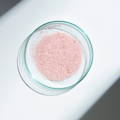
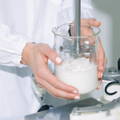
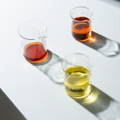

This ultra-effective ingredient has a host of anti-aging benefits because of its ability to retain water. Each molecule of hyaluronic acid (HA) attracts multiple times the amount of its weight in water, meaning moisturizing products that contain HA are incredibly effective. Those with dry skin or who live in harsh climates can greatly benefit from products that contain hyaluronic acid. Additionally, all skin types can use products with HA, unless a specific allergy is at play.
[ comfort zone ] offers an array of products that are focused on retaining a youthful appearance and glowing, healthy skin. Discover where to find HA in our formulas:
This term refers to an over-the-counter, topical, vitamin-A based skin care ingredient. Retinol is derived from retinoids (contained in prescription skin care products). This type of ingredient was originally used in acne-treatments but then gained momentum in the anti-aging category once scientists realized they reduced discoloration and scars.
Our /skin regimen/ 1.5 Retinol Booster with concentrated, encapsulated retinol has a powerhouse formula that minimizes fine lines and wrinkles in no time.
Notorious for its brightening abilities, vitamin C neutralizes free radicals and stops the production of melanin, giving way to a bright, fresh appearance. This ingredient has gained immense popularity over the past decade and for good reason, it’s natural and full of antioxidants.
A naturally-occurring humectant, betaine is a wonderful ingredient to look for in anti-aging products. Its molecules fill in deep wrinkles, giving a smoother, silkier effect overall. Below are the [comfort zone] products that contain betaine.
This ingredient belongs to PHA acids and is known to cleanse while smoothing one’s appearance. Gluconolactone consists of ‘thirsty’ molecules that pull water out of the air and infuse it into your skin.
Also called vitamin B3, niacinamide is a noteworthy ingredient on the quest to clear, youthful skin. This water-soluble vitamin reduces the appearance of enlarged pores, improves uneven skin tone, and softens fine lines. It also feeds the skin nutrients that allow the skin to naturally fortify its barrier.
Our alcohol-free Essential Toner with Niacinamide revitalizes irritated, drab skin.
Known as food for probiotics, prebiotics feed the good bacteria living on the surface of our skin so that it can remain healthy and strong.
Cosmetics and skincare rituals have been around since at least 6,000 BCE. Most notably the Egyptian culture used a variety of milks, oils, dyes, and essential oils to create moisturizing lotions, exfoliants, and anti-aging products. While our modern skin care rituals may appear different, the end goal is the same - to treat our skin with the utmost care and retain a youthful, bright appearance.
In order for our skin to remain healthy, it needs three general types of ingredients. They are:
In order to remain youthful and elastic, the skin needs ample amounts of moisture. Skin restoring ingredients - like retinol, peptides, linolenic acids, and niacinamide - work to reinvigorate the skin and mitigate a lackluster, dull appearance.
We choose food loaded with antioxidants like goji berry smoothies or kale salads. Why would we not do the same for our skin? Antioxidant ingredients provide the healthy food that our skin’s natural biome needs to stay strong and fortified.
Some of the more well-researched skin replenishing ingredients are hyaluronic acid, ceramides, salicylic acid, and amino acids. These work to lock in moisture and replenish the skin’s natural stores of lubrication.
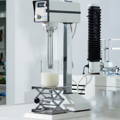
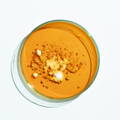
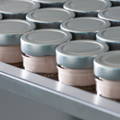
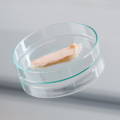
Some skin care manufacturers opt to use lesser quality ingredients because they are so much cheaper. They can fill up the bulk of a face oil, body lotion, or cleanser with a harsher ingredient that is still regarded as safe by cosmetic governing bodies, then add a small portion of vitamin C, HA, or other trending ingredients. Their packaging may lay claim to many anti-aging, moisturizing, or acne-fighting benefits by advertising the buzz word when in fact, the product can do much more harm than good.
As a general rule of thumb, stay away from the following ingredients:
It’s crucial to read skin care product labels before purchasing. You’ll be better able to know what your skin likes and what it doesn’t. Identify your skin care goals, first. Regardless of if your goals include combating maskne, reducing under eye wrinkles, or minimizing dark spots, knowing the properties and characteristics of each ingredient will help you make a more informed decision.
Choose superior products that use high quality ingredients or you will simply be harming your skin in the long run. The skin is the largest organ on our bodies and our first line of defense. Treat it right by investing a little more time and money to research and procure the best.
At [ comfort zone ], we pride ourselves on our B Corp status and sustainable skin care practices. We opt for recyclable packaging and employ green practices wherever we can. The personal care product industry can take its toll on the earth’s natural resources. It’s up to us, the industry leaders, to safeguard the place we all call home.
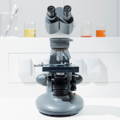
Learn how to use this powerful ingredient for fine lines, breakouts, and anti-aging.